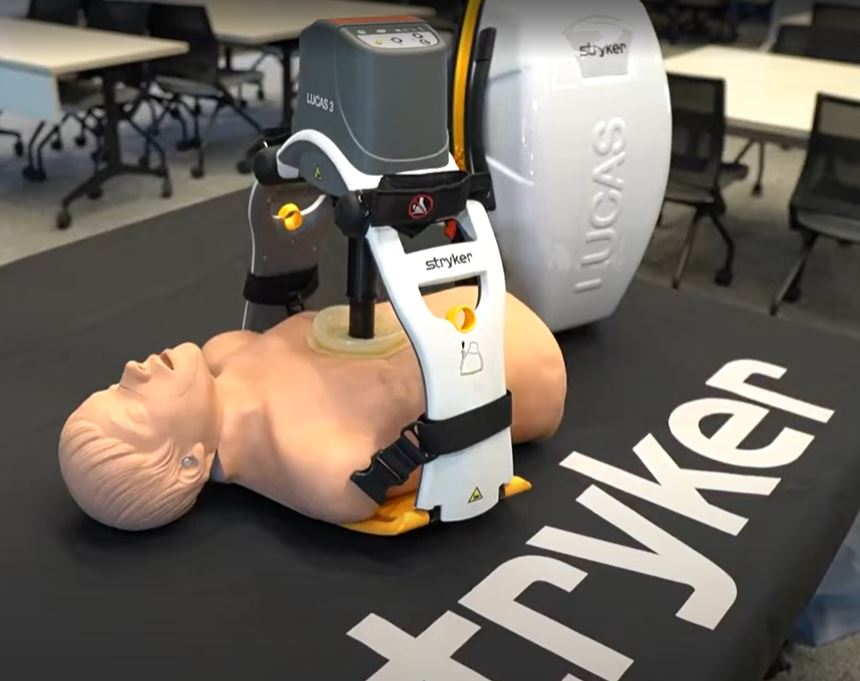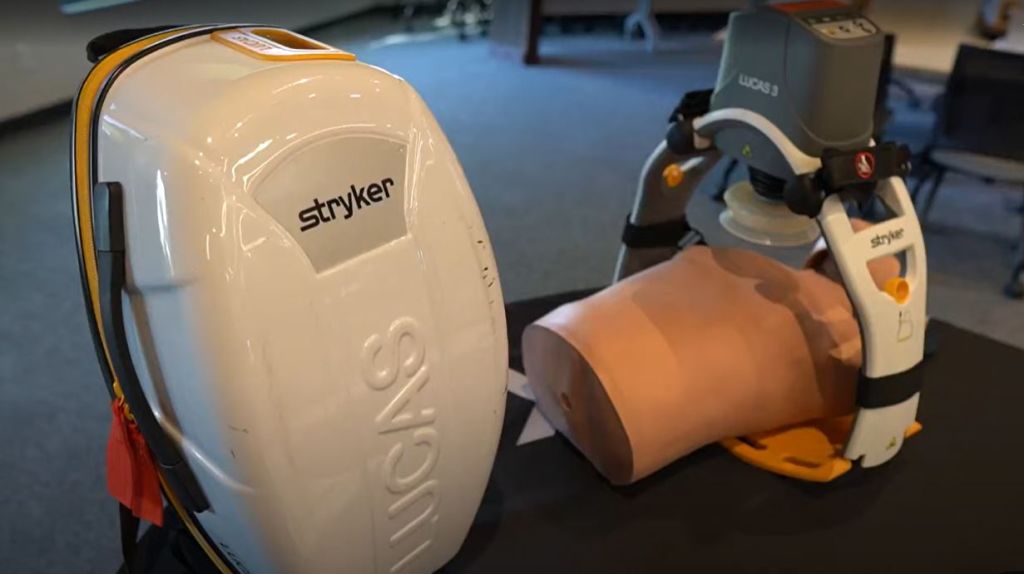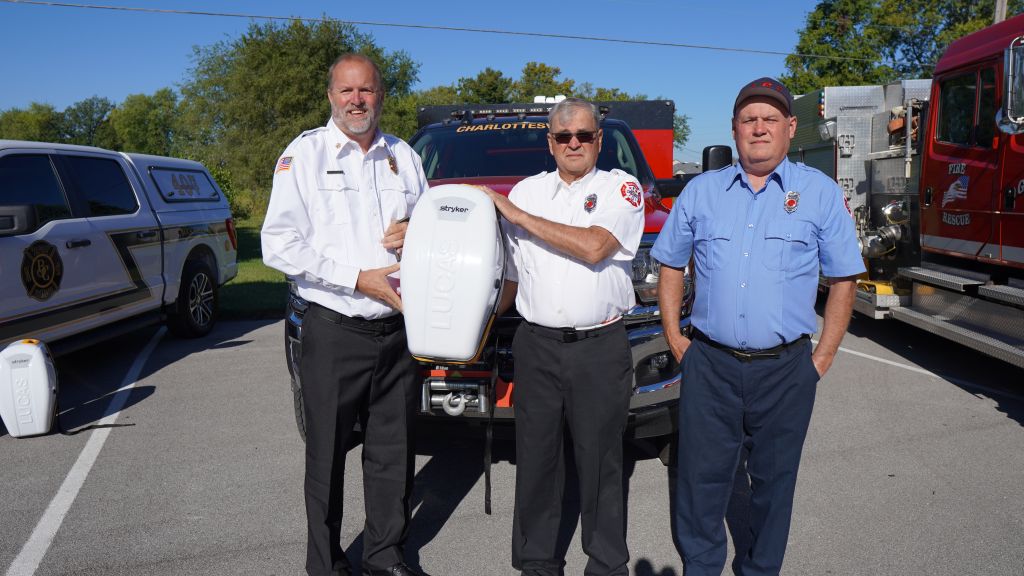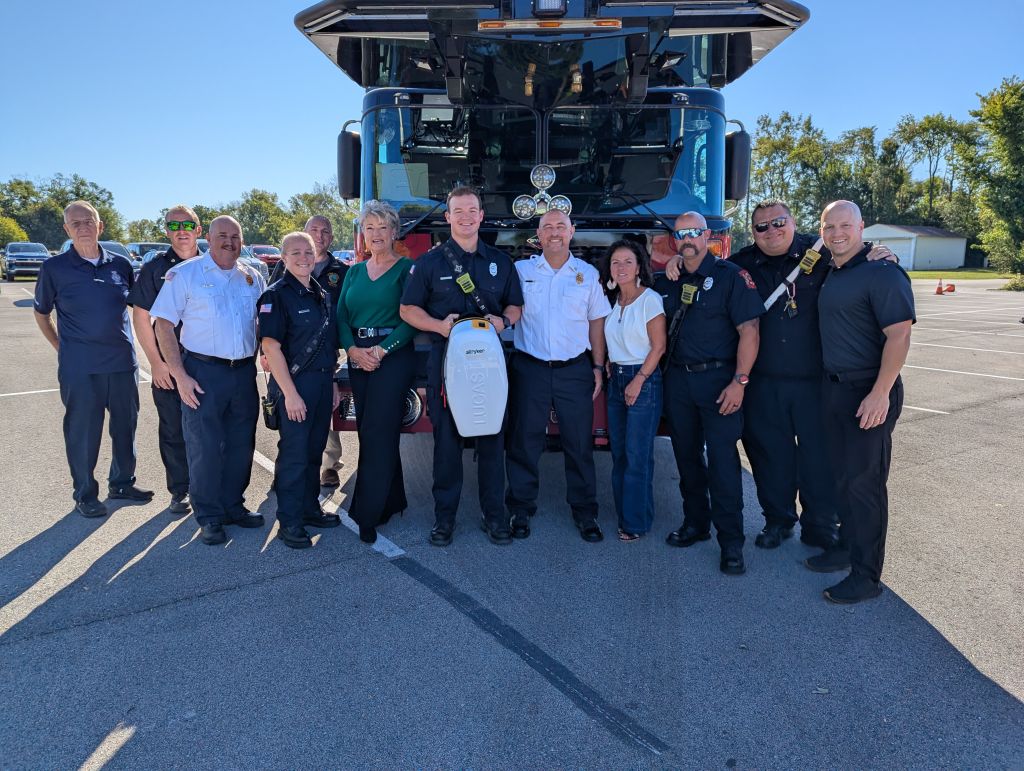Hancock Co Buys Life Saving CPR Devices for Fire Departments
Hancock County Buys Life Saving CPR Devices for Area Fire Departments


HANCOCK COUNTY, Ind. — Hancock County is buying lifesaving CPR devices for every one of their area fire departments.
The county has purchased 13 LUCAS CPR devices that can give consistent chest compressions for a patient during ambulance transport. The new LUCAS devices increase the number that the career departments in the county already have and also gets one to the volunteer fire departments who didn’t have one before.
State officials and local leaders including fire chiefs and members of the Hancock County Commission got a firsthand look at the devices during an event held Friday in Greenfield.
Hancock County 911 Director John Jokantas said these new devices are essentially any extra pair of hands that can administer CPR just as well as a person can.
“It allows the responders to not have to do manual CPR which helps with fatigue and the patient gets a higher quality CPR for a longer duration of time,” Jokantas explained.
Jokantas said this type of technology offers more than a better chance of survival from a cardiac event.
“It also could help with the person’s quality of life after the event,” said Jokantas.
John Collins, Chief of the Charlottesville Volunteer Fire Department, said these devices are a great tool for a rural department like theirs to have.
“This device is great for us to have with limited manpower,” he said. “As a volunteer fire department, you may not know how many guys you’re going to have show up to call, you could have two or you could have 10.”


CPR is tough to do and usually requires five or six people with the LUCAS device. With limited resources, Collins believes the devices can help with their efficiency.
“Without wearing them out, we can get CPR started with one to two guys until further manpower arrives,” Collins said.
Funding for the LUCAS devices came from a general obligation bond that the county typically uses for capital expenses. Jokantas said Hancock County wants to set an example for other areas of the state in getting high quality machines like these for their local fire departments.
“We would encourage other places to seek the funding, whether that’s through grants or bonds,” Jokantas added. “These devices really can save a life.”



